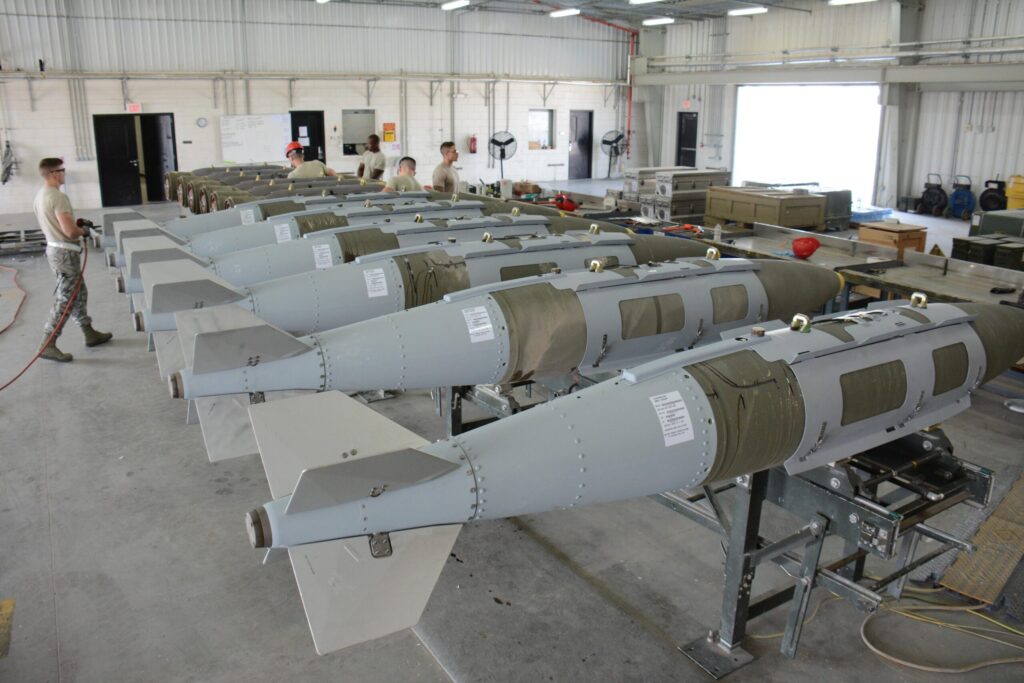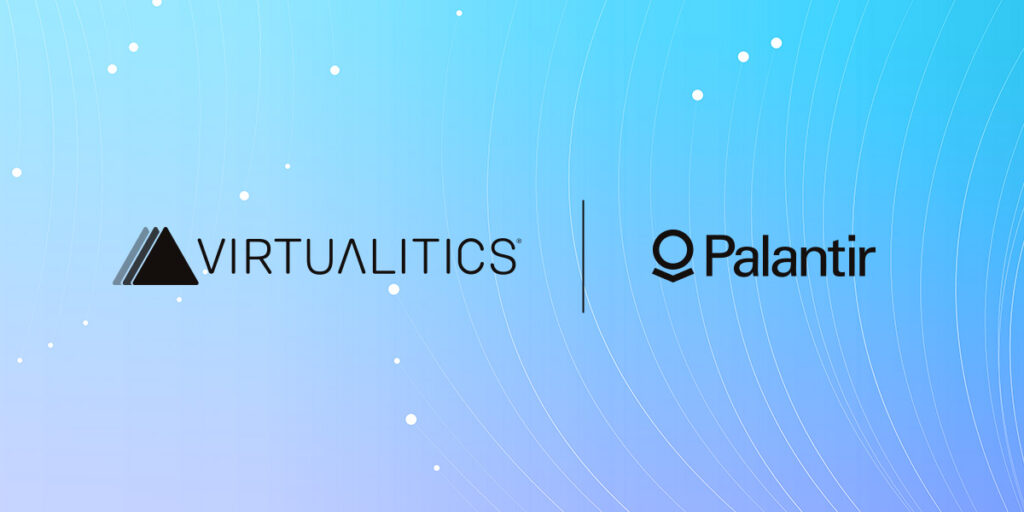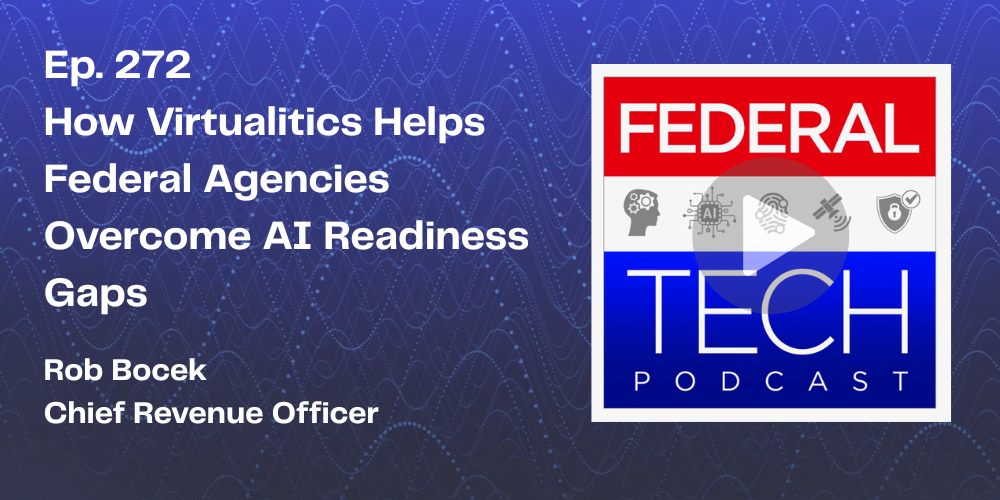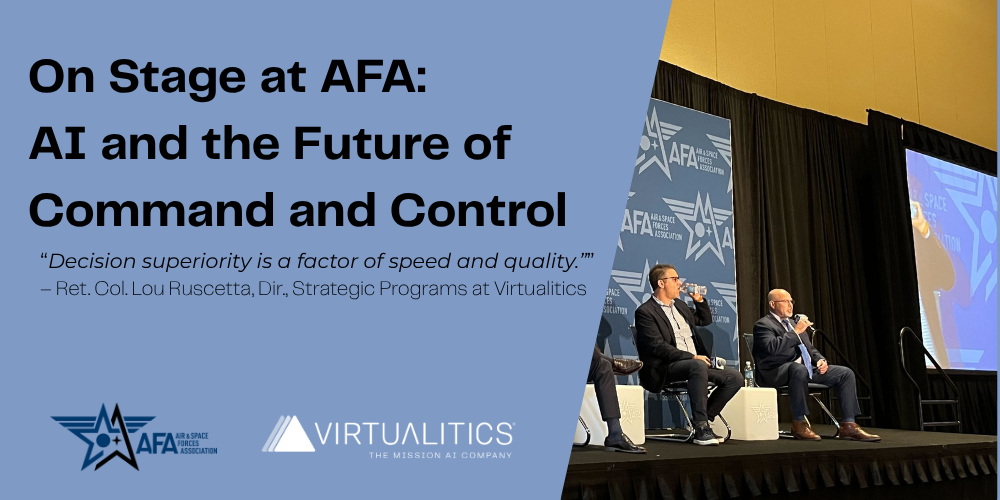Federal civilian agencies are navigating an increasingly complex environment that requires quick, public decision making to accomplish their missions. From securing our borders and critical infrastructure to managing public services and a vast supply chain, leaders are under immense pressure to anticipate challenges, act decisively, and deliver outcomes transparently.
By implementing an AI data-driven approach, agencies are able to quickly and proactively make data-driven decisions. In fact, at the 2025 National Homeland Security Conference (NHSC), leaders emphasized the importance of resilience, preparedness, and data-driven decision-making throughout the emergency response disciplines at all levels of government.
Fortunately, AI readiness applications, built with advanced machine learning, explainable AI, and readiness AI agents, can help all federal civilian agencies develop effective programs and plan both for current needs and future growth. By automating insight into ever growing and complex datasets, agencies can reduce risk and create time and money saving efficiencies while accomplishing their goals.
Here are three ways federal agencies can apply AI to strengthen operational efficiencies, reduce and understand risks, and achieve their mission objectives:
1. Anticipating and Managing Complex Risks
Whether it’s securing critical infrastructure and mission assets, monitoring environmental impacts, or optimizing a national supply chain, federal agencies often have to manually compile data and derive insight from sprawling datasets that span sensor feeds, satellite telemetry, operational logs, and more.
A common theme at NHSC 2025 was the need to rapidly synthesize and analyze data in order to manage risks and threats. Unfortunately, traditional business intelligence and analytics tools struggle to integrate these sources and highlight the hidden interdependencies that drive risk.
However, AI-driven analytics platforms excel at data fusion, giving agencies a big picture view of all their operations so they can identify risks before they escalate. By visualizing patterns in multidimensional, geospatial contexts, decision-makers can see, for example, how a security threat may converge with critical infrastructure vulnerabilities or how a supply chain disruption might ripple across a vast logistics and delivery network.
2. Accelerating Situational Awareness and Response
Many federal agencies share a common challenge: figuring out how to sift through an overwhelming flow of data to find actionable insights fast enough to matter. Delays in recognizing security threats, not having critical assets ready to complete a mission, infrastructure vulnerabilities, or critical citizen needs can diminish public trust and jeopardize public safety.
AI agents, such as Virtualitics Iris, empower organizational leaders, operators, and analysts to consume insights faster, communicate them more effectively, and make mission-critical decisions with greater speed and confidence. Instead of waiting on analysts to manually sift through thousands of reports, officials can query data in natural, conversational language to quickly uncover root drivers of anomalies or opportunities and visualize the results instantly. With these capabilities, agencies can shorten decision cycles from weeks to hours, see where they can save time and money, and spot risks before they grow into problems.
3. Modernizing Logistics and Inventory Management
For many agencies, mission success depends on the ability to track, maintain, move, store, and distribute critical resources efficiently—whether that’s emergency response equipment, critical infrastructure components, or perishable goods. Yet, many still rely on legacy systems and siloed analytics that make it nearly impossible to anticipate outcomes or mitigate risks like delivery deadlines, limited labor, compliance requirements, storage challenges, and shifting demand.
With traditional business intelligence tools, it’s a manual, time-consuming process to synthesize all the information needed to correctly manage and anticipate all the complexities involved. AI-powered constraint solving solutions can help agencies orchestrate inventory and logistics intelligently.
For example, the United States Coast Guard faces significant challenges with aging assets, deferred maintenance, part obsolescence, and workforce shortages. These issues directly impact the availability and readiness of their critical fleet of cutters and, by extension, their entire mission. AI can analyze millions of data points from these operations in minutes to help officials proactively predict maintenance needs, optimize resource allocation, and build greater resilience into the USCG’s logistics and maintenance operations
Operational Efficiencies with AI: The Virtualitics Advantage
The three pathways above—anticipating risks, accelerating response, and modernizing logistics—represent practical, high-impact areas where AI-powered decision intelligence directly supports greater operational efficiencies. Virtualitics empowers this by:
- Making AI explainable: Agencies can see not only the “what” but the “why” behind AI-driven insights. Intuitive suggestions and dashboards allow any user—from leader, analyst, or operator—to quickly understand the data that led to the trend or suggestion.
- Operating in secure environments: Virtualitics maintains enterprise-grade security through its SOC 2 certification, adherence to NIST SP 800-171, CIS Top 18 Controls, and FIPS 140-2 standards, plus DoD Impact Level 5 readiness via Palantir’s FedStart program.
- Proven public sector experience: Virtualitics has a strong track record of delivering innovative, AI-powered solutions across the Department of Defense, consistently demonstrating its ability to address complex, mission-critical challenges.
Automated Efficiencies and Risk Insights for Agencies
The challenges that today’s federal agencies face are not going away. What can change is how agencies analyze and leverage their data to make quicker, data-driven decisions. By adopting secure, powerful, and explainable AI applications, federal agencies gain foresight into risks, act with greater speed and clarity, and deliver services that foster public trust.
Data agility is the key to strengthening preparedness and moving from reactive responses to proactive strategies that enable critical missions and keep America safe, growing and successful.
To learn more about how AI applications can drive the mission of federal agencies forward, reach out to one of our experts.






